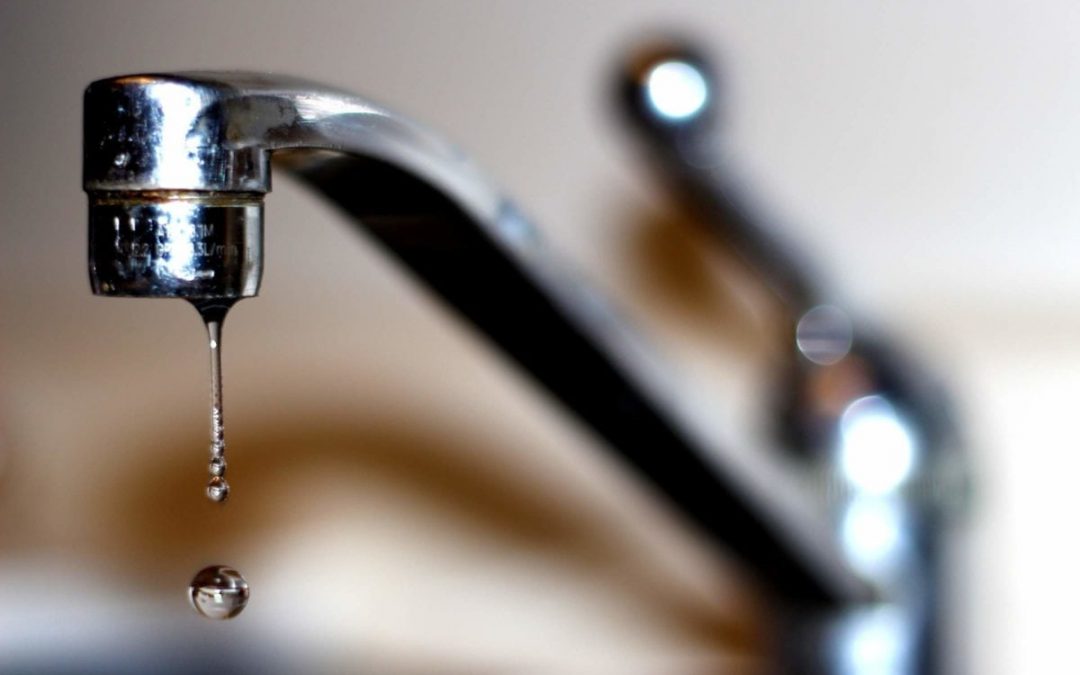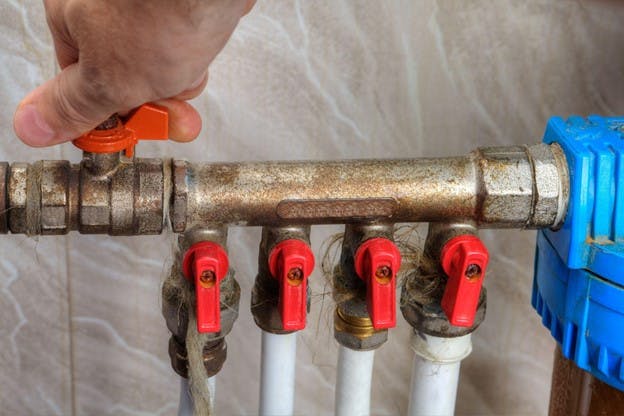Easy-to-Follow Instructions for Fixing Low Water Pressure in Your Home
Easy-to-Follow Instructions for Fixing Low Water Pressure in Your Home
Blog Article
What're your opinions on Dealing with Low Water Pressure in Your Home?

Low tide pressure in your home can be an aggravating issue, impacting whatever from showering to washing recipes. If you're experiencing weak water circulation, there are numerous feasible causes and options to explore. In this guide, we'll review typical factors for low water pressure and functional steps to attend to the concern efficiently.
Introduction to Low Water Stress
Low water stress happens when the flow of water from your taps, showers, and various other components is weaker than common. This can make daily jobs much more difficult and less effective. Comprehending the causes of low tide stress is important to locating the best remedy.
Usual Causes of Low Water Pressure
Pipe Obstructions
Gradually, pipelines can become blocked with natural resource, debris, or particles, limiting the circulation of water. This is an usual concern in older homes with galvanized steel pipelines.
Deterioration
Deterioration within pipelines can cause leaks and minimized water stress. Rust build-up can restrict water flow, especially in aging plumbing systems.
Faulty Pressure Regulatory Authorities
Stress regulatory authorities are accountable for maintaining constant water pressure in your home. If they malfunction, it can lead to low water stress or uneven circulation throughout your home.
Community Water Supply Issues
Occasionally, the issue exists outside your home. Local supply of water concerns, such as main line leaks or upkeep work, can momentarily minimize water stress in your location.
How to Identify Low Water Stress
Examining Taps and Fixtures
Beginning by checking the water stress at different taps and fixtures throughout your home. If the concern is separated to details locations, it may suggest localized issues.
Checking Pipes
Check noticeable pipelines for indicators of leakages, deterioration, or blockages. Focus on any kind of uncommon noises, such as knocking or rattling pipelines, which might indicate problems within the plumbing system.
Consulting with a Plumber
If you're unable to identify the cause of low water pressure, think about hiring a specialist plumber to carry out an extensive examination. They can recognize underlying concerns and suggest suitable solutions.
Do It Yourself Solutions to Take Care Of Low Water Pressure
Cleaning Aerators and Showerheads
Natural resources can collect in aerators and showerheads, lowering water flow. Get rid of and cleanse these parts consistently to boost water pressure.
Flushing Hot Water Heater
Sediment accumulation in the hot water heater can restrict circulation and decrease performance. Flushing the container regularly helps eliminate debris and maintain optimal performance.
Examining Pressure Regulator
Guarantee that the stress regulator is functioning correctly. Adjusting or replacing the regulatory authority can assist restore appropriate water pressure throughout your home.
Clearing Up Clogs in Piping
For small obstructions, try making use of a plumbing serpent or chemical drain cleaner to clear obstructions in pipelines. Beware when utilizing chemicals and comply with safety guidelines.
When to Call a Professional Plumber
If DIY initiatives fall short to resolve the issue or if you believe substantial plumbing problems, it's ideal to seek aid from an accredited plumber. They have the proficiency and devices to deal with intricate problems safely and effectively.
Safety Nets to Maintain Water Stress
Regular Maintenance
Set up regular upkeep for your plumbing system to avoid problems such as rust, leaks, and obstructions. Attending to small problems early can assist stay clear of more substantial repair services later on.
Mounting a Stress Booster
Think about mounting a stress booster pump to improve water pressure in locations with consistently low flow. This can be particularly beneficial for multi-story homes or buildings with high-demand fixtures.
Surveillance Water Use
Be mindful of water use routines and prevent ill-using the plumbing system. Basic adjustments, such as shocking showers and laundry loads, can assist keep ample water pressure.
Verdict
Taking care of low water pressure can be frustrating, but identifying the underlying causes and executing ideal remedies can bring back ideal flow throughout your home. Whether it's cleaning aerators, evaluating pipelines, or speaking with a plumber, taking positive steps can make sure a steady supply of water for your daily requirements.
FOUR WAYS TO FIX LOW WATER PRESSURE NOW
Turning on a shower or faucet only to find the water comes out in a sad, slow drizzle is never a good feeling. How exactly are you supposed to wash a pan or take a quick shower when it takes 10 minutes just to rinse off a little soap? The good news is that when your water pressure is bad, there's always a cause: typically one that can be easily fixed. Here are some of the most common causes of low pressure and what you can do to fix the issue:
DEBRIS AND MINERAL DEPOSIT BUILDUPS
If you notice low water pressure from just one or two of the fixtures in your house, the problem likely has to do with debris buildup. Water is full of minerals and other debris, all of which can accumulate in your pipes and on your fixtures. This can cause a blockage that affects how much water flows through. To fix this, try filling a small plastic bag with white vinegar, and use a rubber band to hang it around your showerhead or faucet. Let the head of the fixture soak for a few hours, and the vinegar should loosen the deposits.
WATER LEAKS
Leaks are another common cause of low water pressure. If water is flowing out of your plumbing through a hole or crack before it can reach your fixture, the pressure coming out of the faucet or showerhead will be lower. A plumbing professional is your best bet for finding and repairing a leak in your water supply pipes.
Leaks are another common cause of low water pressure. If water is flowing out of your plumbing through a hole or crack before it can reach your fixture, the pressure coming out of the faucet or showerhead will be lower. A plumbing professional is your best bet for finding and repairing a leak in your water supply pipes.
FOUR WAYS TO FIX LOW WATER PRESSURE NOW
Turning on a shower or faucet only to find the water comes out in a sad, slow drizzle is never a good feeling. How exactly are you supposed to wash a pan or take a quick shower when it takes 10 minutes just to rinse off a little soap? The good news is that when your water pressure is bad, there's always a cause: typically one that can be easily fixed. Here are some of the most common causes of low pressure and what you can do to fix the issue:
DEBRIS AND MINERAL DEPOSIT BUILDUPS
If you notice low water pressure from just one or two of the fixtures in your house, the problem likely has to do with debris buildup. Water is full of minerals and other debris, all of which can accumulate in your pipes and on your fixtures. This can cause a blockage that affects how much water flows through. To fix this, try filling a small plastic bag with white vinegar, and use a rubber band to hang it around your showerhead or faucet. Let the head of the fixture soak for a few hours, and the vinegar should loosen the deposits.
WATER LEAKS
Leaks are another common cause of low water pressure. If water is flowing out of your plumbing through a hole or crack before it can reach your fixture, the pressure coming out of the faucet or showerhead will be lower. A plumbing professional is your best bet for finding and repairing a leak in your water supply pipes.
Leaks are another common cause of low water pressure. If water is flowing out of your plumbing through a hole or crack before it can reach your fixture, the pressure coming out of the faucet or showerhead will be lower. A plumbing professional is your best bet for finding and repairing a leak in your water supply pipes.
A VALVE ISSUE
If you have low water pressure throughout your home, check your main shut-off valve to make sure it's completely open. You may also want to see if there's a pressure-reducing valve installed. If there is, have a plumber help you adjust the settings to get the pressure you're looking for.
OTHERS USING WATER
Believe it or not, your low water pressure could be caused by your neighbors. If you notice low pressure at certain times of day, it may be because you and the people living next to you have similar schedules - when everyone is showering at the same time, the pressure will be lower in every home. Low pressure throughout the neighborhood may also be caused by an issue with your municipal water supply. If that's the case, call the supplier to see if they're working on the issue.
https://www.rotorooter.com/blog/water-leaking/low-water-pressure-fixes/

I was shown that report on 10 Reasons for Low Water Pressure in Your House from someone on a different site. Those who appreciated our blog entry plz make sure you remember to share it. I enjoy reading our article about 9 Reasons for Low Water Pressure in Your House.
Call Today Report this page